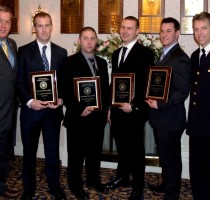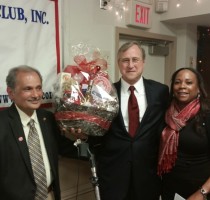By Maureen Grey
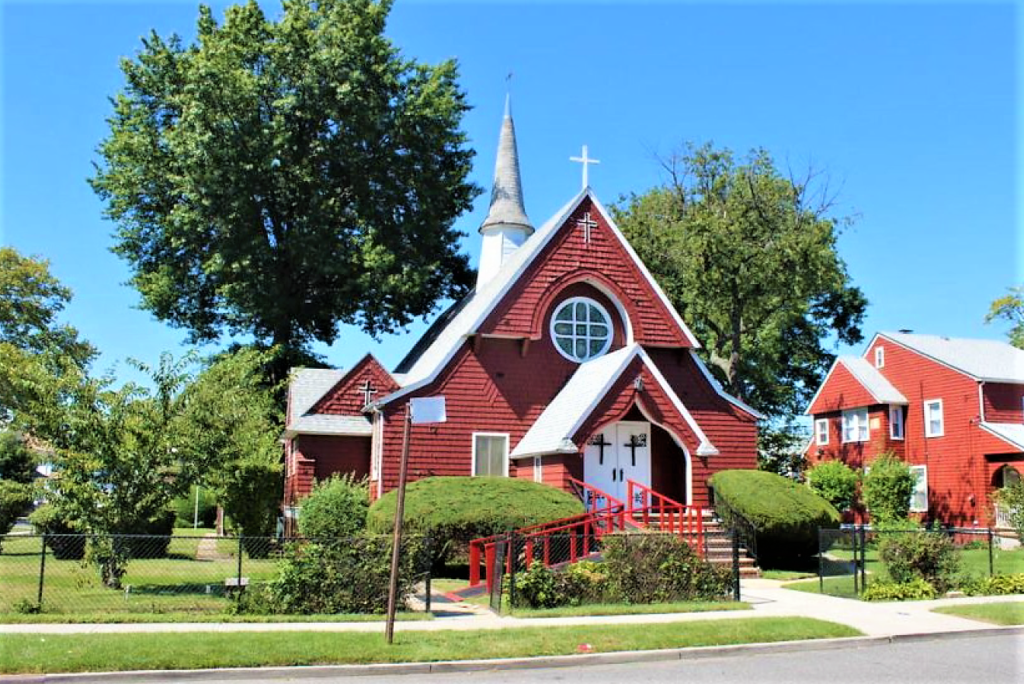
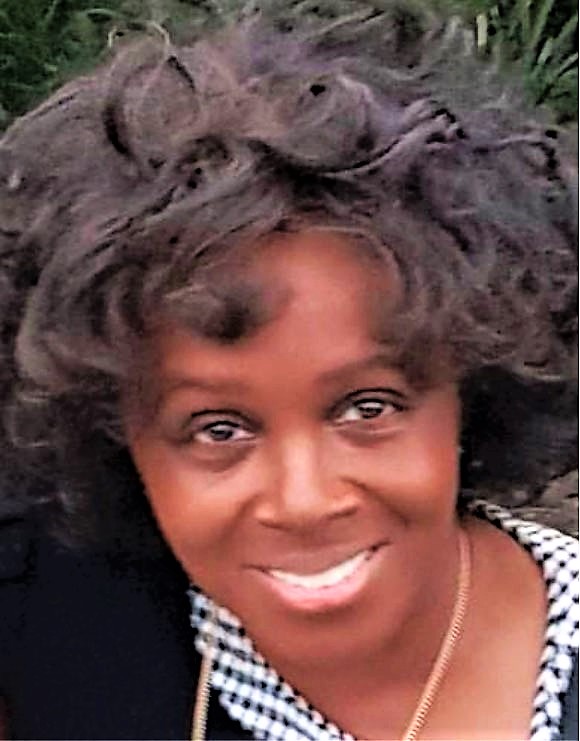
This Christmas, 2022 was very difficult. It was the first Christmas in which the buildings of my former church and my elementary school did not exist. Besides the few Christmases I spent in Jamaica, W.I., Christmas was always associated with St. Joseph’s. My first year in the country as a first grader, I was asked to sing in the choir. I was dressed as an angel. I remember my mother trying so hard to make my tinsel wings look real. As I got older, I was asked to be the narrator of the Christmas story. I remember the long rehearsals and all the pointers on how to speak well. Today, as an educator, I still use those skills learned so long ago in that wooden church with the Noah’s Ark ceiling in Queens Village. It is so hard to see the space where so many memories were made – empty. It is as if the lives of all those who were members have been “Gone with the Wind.” But like Scarlet, a new day has arisen with a new determined hope to fulfill deferred dreams by creating a historical and preservation historical society in Southeast Queens so that such a destruction of buildings and history will not happen so easily.
Demolition of beloved places or institutions can be life ending, but it can also be a means of bringing new life and vigor to fulfill a legacy and act upon delayed dreams. Reviving one’s dreams in December is so appropriate because it is the month where so many celebrate the miracle of light burning in a Temple lamp longer than expected and celebrate the miracle of a newborn who brought light into the world. Revived dreams seem alive in December, but the true test comes in January – in a new year – when delayed dreams are allowed to become reality.
One of those delayed dreams is the creation of a society or association to find, preserve, and disseminate the history and contributions of the residents of Southeast Queens. Such an organization could rally residents in greater numbers to fight for building preservation and historical recognition – what I hoped would have materialized in 2020 when it was announced during its 150th Anniversary that the St. Joseph’s Episcopal Church buildings may have to be demolished to make way for an income producing entity, such as affordable housing. But the landmarking/preservation organization did not materialize due mainly to separation during Covid-19, lack of knowledge of how to create such a group, fear, inadequate contact information of members and alumni, and lack of faith.
With the demolition of the 127-year-old building – the second oldest church in Queens Village – in October, the need to form an historical and preservation association for not just St. Albans or Queens Village, but also for the entire Southeastern Queens became paramount in the hearts and minds of those who are tired of dreams deferred and delayed. The dream was fulfilled on December 8 when twelve people attended an Interest Meeting to explore the establishment of a historical society.
The Interest Meeting for the Historical and Preservation Society which was held at the newly opened Global Outreach Deliverance Church 193-17 Linden Blvd., St. Albans, New York. The church opened in late 2022 as a means of helping the community in addition to offering religious guidance under the leadership of Bishop Melvin Artis is located in a historic building – the St. Albans Chamber of Commerce Building. Hosting the Historical Society’s meeting until a more permanent space is found is just one of those ways of servicing the needs of Southeast Queens, especially St. Albans.
Road to Interest Meeting
Although it seems like overnight, the idea in earnest to create a society goes back to 2017 when Oster Bryan, M.A., president of the St. Albans Improvement Civic Association, allowed me to make a few remarks at the Civic monthly meeting about the history of St. Albans and the need to promote it. The 100th Anniversary of the St. Albans Branch of the Queens Public Library, also encouraged me to research St. Albans – and not just Addisleigh Park – which is richly documented and landmarked. I even walked Linden Blvd to find the first library building in what I call downtown St. Albans, from the LIRR train station to Farmers Blvd and Linden Blvd. intersection. Realizing that some buildings are still standing, encouraged me to continue researching my hometown with the hopes that a historical society could take on the work.
Another source of inspiration were the comments made by members of the St. Albans Civic In 2020, I became more active in the St. Albans Improvement Civic Association and made presentations on events that led to the development of St. Albans. During those meetings, I mentioned the need for a historical society that catered to St. Albans and the rest of Springfield (Southeast Queens) so as to document the contributions of residents before we are all gone and new residents think that African Americans contributed little to St. Albans history.
The St. Albans Library research prompted me to find the first civic building erected in 1904 by the Ladies Social Society – the Square Club. Delightfully, the building was still there! The wooden shingles are gone but the building is still standing-this time serving as a church – St. Albans First Church of God in Christ. Ironically the women of the Ladies Social Society led Sunday School classes in the Square Club and helped to raise funds for the first church built in St. Albans.
In late 2021, I contacted Superintendent William T. Armstead, pastor of St. Albans First Church of God in Christ, to find out if he had a history on the building and the church located at 187-10 Baisley Blvd. He said that he had some artifacts, but there was no history book. Nearly a year later, on October 13 to 14, I made a presentation on the history of the role of the Square Club – what the civic building had been called. The parishioners were so excited to see the pictures of the social club building before it became a church. The following week I found out that the 14th of October was the start of demolition at St. Joseph’s. I realized that this was a full circle moment. The torch to save other buildings had been passed. Pastor Armstead who is currently completing his doctorate, appointed Ms. Kiswana Clark as a historical liaison to attend the Interest Meeting and future meetings.
The Meeting
After Bishop Artis opened the meeting with a convocation, the attendees were welcomed and introduced. Some attendees brought souvenirs and talked about them briefly. The attendees also answered trivia questions on the history of Southeast Queens, and a brief overview of the items on the display table which included several poster boards of Queens Village, St. Joseph’s Church, and the oldest civic building in St. Albans-the Square Club.
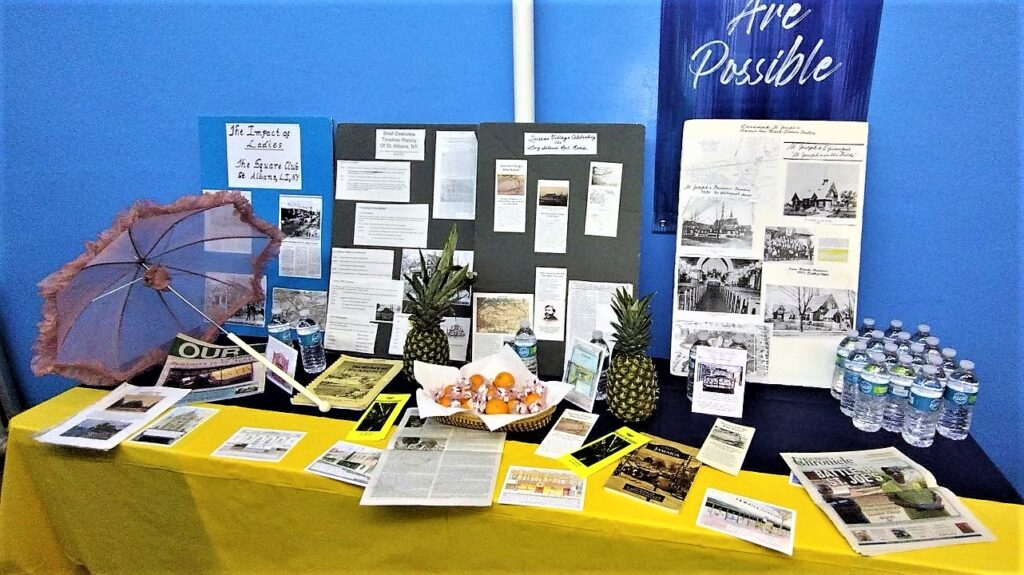
The attendees included James Trent, noted preservationist and Oster Bryan, President of the St. Albans Improvement Civic Association out of which this society is growing. Those in attendance represented many areas of and races in Queens such as Bellerose, Queens Village, Jamaica, St. Albans, and the historically landmarked neighborhood Addisleigh Park – the second most important area in regards to the history of the Harlem Renaissance. Careers of the attendees varied from historian to lawyer, computer engineers to educators, and religious leaders to social workers and entrepreneurs.
Meeting Happenings
Although there was an agenda the discussion was fluid often interspersed with local history and personal stories of events in St. Albans, Jamaica (Negro burial ground) or with how the Queens Farm (Little Neck Parkway) was saved from development, many of those in attendance, including myself, have not started an organization whose purpose is to preserve the history of buildings, stories, and lives of a neighborhood. But there was so much excitement and new ideas about being an economic contributor that the fears seemed to have been allayed.
Southeast Queens is a predominately African American area which is experiencing other racial groups – mainly from parts of the eastern Caribbean, Asia, Southeast and South Asia, and European-Americans. It was emphasized this is the time to urgently find the history of the African American lives in Southeast Queens before all the witnesses to the rich history have moved or passed away and future generations will think that not much was accomplished over the past 70 years.
What towns make up Southeast Queens
There is ongoing discussion as to what towns will be considered Southeast Queens, the following areas are generally considered to be part of Southeast Queens: Bellaire, Brookville, Hollis, Hollis Hills, Holliswood, Jamaica, Jamaica Estates, Jamaica Hills, Meadowmere, Queens Village, St. Albans, Cambria Heights, Laurelton. Rochdale, Rosedale, Springfield Gardens, South Jamaica, Warnerville and Elmont (Nassau County)
Tentative Mission
Attendees discussed the proposed mission statement and purposes of the Society. The tentative mission includes but not limited to: Promoting the importance of Southeast Queens by emphasizing the lives of First Nations indigenous peoples, “Old Immigrants,” African slaves, children of the African diaspora and all immigrants by emphasizing their roles and contributions in developing Long Island, New York City, New York State, and the United States economically, politically, and socially. This is not the finalized mission statement, but it will serve as a blueprint for discussion at future meetings.
What exactly will the group do…? A work in progress
Besides the mission statement, there was a brief discussion about the tentative purposes of the Historical Society. This is an ongoing discussion. Some suggested purposes are as follows:
| Tentative Purposes: – Document, present, promote, and preserve the history of Southeast Queens – Educate the community of the history of the area buildings, institutions, businesses, and history – making persons through field trips, presentations, and lectures – Promote preservation of individual, business, and community artifacts – Identify and landmark historical buildings/areas in the area – Establish a permanent center to exhibit artifacts and educate the community. |
How to Start an Historical Society
The question that concerned us was how does one start a historical society. James Trent, historian for the Queens Village Republican Club and president of the 325-year-old Queens Farm Museum and the Poppenhusen Institute, offered several types of organizations from a benevolent association to a nonprofit. He also mentioned several historical societies in Queens from which the Society could get advice. Most attendees were unaware of many of these historical societies, however there was not one historical society created for the study of Springfield, the area which encompasses much of present-day Southeast Queens.
As was mentioned in the meeting, Southeast Queens has suffered from a lack of resources and knowledge about starting civic organizations because of little printed public communication, community unity, and a tradition of little political engagement on civic matters on the part of many residents who often are working several jobs so as to pay the increasing property costs. James Trent, who has several year’s experience in civic and historic groups, encouraged the attendees to persevere by finding courage to fight. Trent sternly said that nothing that he has done to help save the Queens Farm was easy. It takes a lot of work. He stressed that “political will” is needed if one wants to see any type of change in one’s quality of life and political issues.
Two hours Later…
After about two hours, the meeting ended without everything on the agenda being discussed, but there was so much enthusiasm about learning historical information and organizational skills and brainstorming that it was expected not all on the agenda would be reached. As a parting gift, attendees took home potatoes, apples, carrots, onions, and candies-all examples of what was grown or produced on the Springfield farms.
Who can be in the group?
Anyone may join, especially if you have an interest in history, preservation, business acumen, and curiosity.
Future Meetings
A new birth requires more dedicated members. We invite everyone to consider joining this group. The Society is planning on meeting after the holidays in late January. If you are interested in getting information about the next meeting, please email me at alumnicommunitynews@gmail.com
On behalf of all who attended the Interest meeting, we are looking forward to seeing you in January.
Maureen Grey is a lifelong teacher, neighborhood historian and preservationist, who led the fight to landmark St. Joseph’s Episcopal Church and other historic buildings.


